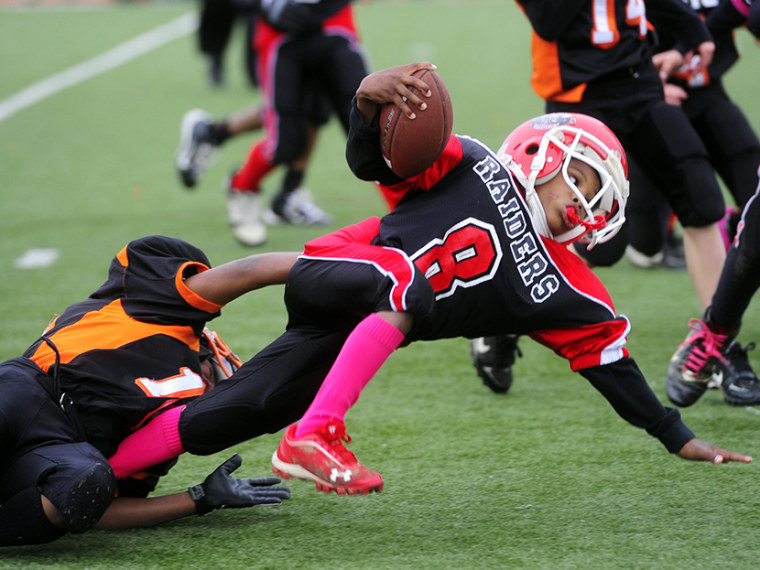Football, wrestling, and cheerleading are the three sports that cause young athletes to visit emergency rooms every 25 seconds, according to a new report released Tuesday.
For the "Game Changers" report, Safe Kids Worldwide studied the 14 most popular sports and found that 1.35 million times a year a young athlete suffers a sports injury severe enough to visit the emergency room.
Not surprisingly, football had the highest concussion rate, followed by wrestling and cheerleading. Ice hockey had the highest percent of concussion injuries, which account for 12% of the emergency hospital visits. Athletes ages 12 to 15 made up almost half—47%—of youth-related concussions seen in the ER.
In addition, girls were more likely to report a concussion compared to boy athletes.
"You don't understand the damage to your brain when it is slammed against your skull in a concussion," Kate Carr, president and CEO of Safe Kids Worldwide, told msnbc. "We have an injury that is not as visible and we have some signs and symptoms of what a concussion does as serious as blacking out to being dizzy."
Knee injuries, especially tears to the ACL, caused one in 10 sports-related injuries. Girls are eight times more likely to have an ACL injury compared to boys, another "alarming fact," Carr said.
"Severe" injuries that bring young athletes to the hospital range from a sprain and a fracture to a scrape, bruise, or concussion.
"We don't want kids to stop playing sports. We want kids to be out there, to be playing safe and strong, and for a long period of time," Carr said. "But what we are encouraging and what we're calling our 'game changers' is to make sure everybody gets educated about how to prevent a serious sports injury."
"We want kids to speak up when they're injured," Carr added. "And to have a discussion with parents, coaches about staying in the game."
